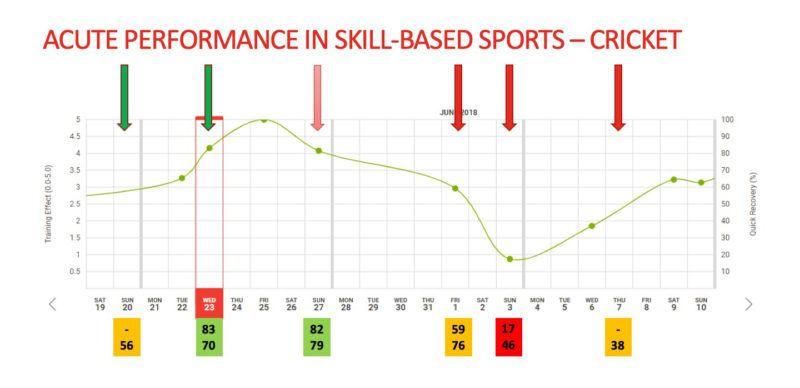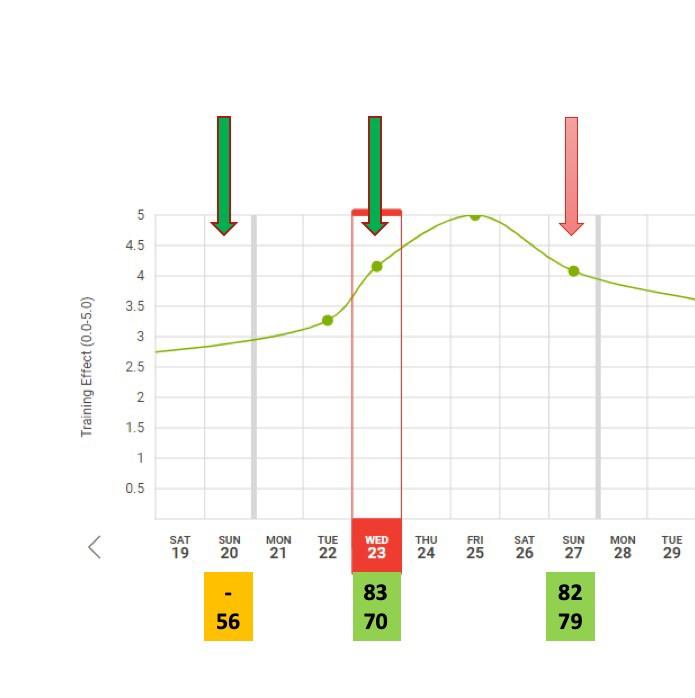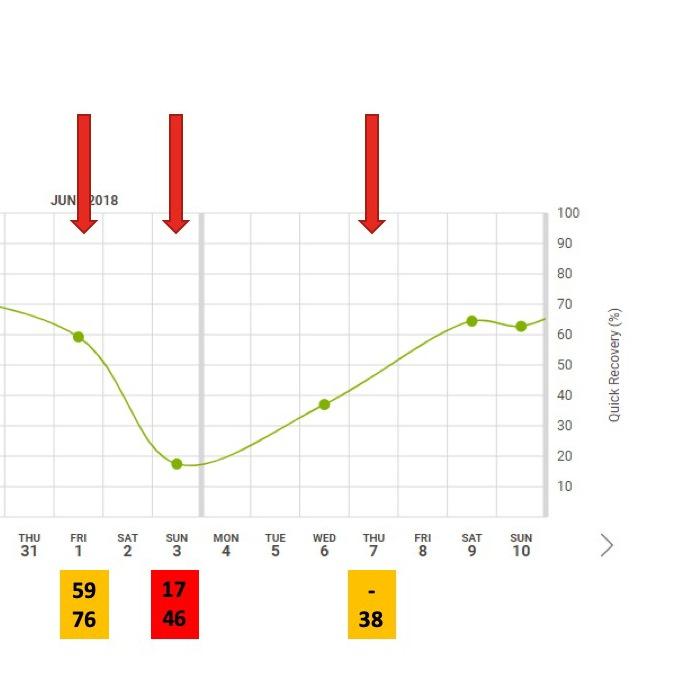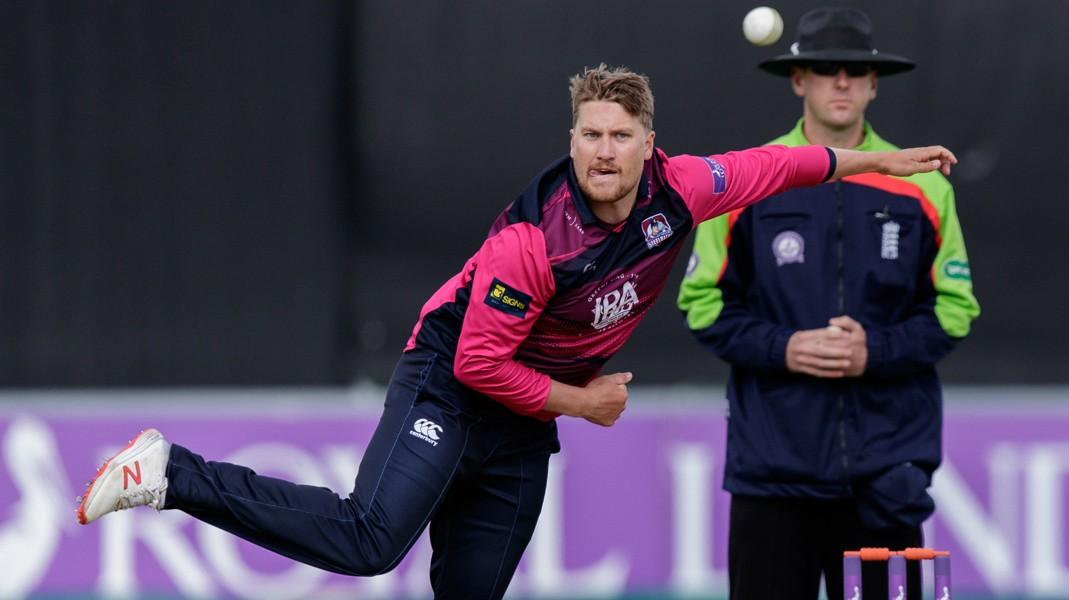
The Cricket World Cup came to a dramatic end on Sunday with England defeating New Zealand in the final. It was the culmination of almost seven weeks of action, with both nations playing 11 games in total.
Tournament competition inevitably places added stress on athletes due the quick turnaround between games. Whether it is the Cricket World Cup, FIFA World Cup, or a playoff series in one of the North American leagues these situations provide limited time for recovery – a crucial factor in optimizing performance.
Firstbeat clients, Northamptonshire County Cricket Club, experienced this during the 2018 Royal London One-Day Cup.
Assessing Recovery
Looking at the data collected during a 23-day period between Saturday 19 May-Sunday 10 June where the Northants Steelbacks played six games, coaches were able to see how acute performance and ability to recover were impacted.
The above chart is taken from the Firstbeat Sports dashboard available to coaches for post-analysis of all key Firstbeat metrics. This chart shows the team’s Quick Recovery Test (QRT) results.
“The QRT is a three-minute test that reveals individual and team recovery and indicates when fatigue accumulation may be contributing to increased injury risk or overtraining,” explains Firstbeat Sports Scientist, Graham Stark. “It uses an advanced metric derived from heart rate and heart rate variability analysis to give coaches an insight into how athletes are coping with the demands being placed upon them, both physical and mental.”
What Does the Chart Show?
The six arrows have been added to indicate game days. The green arrows show wins, the dark red are defeats, and the lighter red arrow refers to a narrow defeat (loss to Durham Jets by 5 runs on May 27).
The numbers in colored boxes at the bottom of the chart show the team’s average QRT score (1-100 scale). The bottom number shows their 7-day average QRT score whilst, where two numbers are shown, the top number shows the group average QRT score from that day’s test.
“The single day score gives an indication of how ready athletes are for the upcoming session while the 7-day average paints a picture of how they’re doing over time; are you seeing peaks and troughs that correspond with their longitudinal loads?,” says Stark.
Interpreting the Results
As you can see, there is a correlation between better QRT scores and better results. Over the first week of the six-game stretch, the team’s 7-day average QRT improved between game day 1 (GD1) and game day 3 (GD3) –from 56 to 79. This suggests the players were recovering effectively at this stage. This corresponded with the team’s best on-field performances as they secured two wins and narrowly lost the other fixture.
In contrast, the team’s final three fixtures in this span ended in three defeats. The fact players struggled to recover sufficiently between games may have influenced this. This is clear with 7-day average QRT scores declining from 76 on GD4 to 46 (GD5) and 38 (GD6). Meanwhile, the highest recorded individual QRT score on these days was never above 57 and was just 17 on GD5.
The QRT data collected on the morning of GD5 on June 3 was by far the worst during this period. This poor recovery correlates with the shortest period between games, with GD4 taking place on June 1.
Northants’ Head of Strength and Conditioning, Chris Lorkin, explains:
“The 50 over competition is arguably the toughest period of our season. The on-pitch volume is very high and the intensity is ramped up due to the nature of white ball cricket. Combine this with playing nearly eight games in around 19 days and you can see a trend occurring as to why the QRT scores were low towards the back end of the competition. This is something we have looked to combat this coming season based on the information Firstbeat provides.”
Why Is Recovery Important?
Although cricket is a more skill-based sport than say football, rugby or American football where the need for good recovery is obvious, it is perhaps even more crucial for performance in sports like cricket or baseball.
“Autonomic fatigue can have a negative impact upon reaction time amongst other things, and when you’re playing a sport which affords reaction times of between 0.45-0.91s it’s not hard to see why this can have a significant effect on performance,” says Stark. “Effective recovery balances the load introduced in training and games and emphasizing recovery is essential for training adaptations to take place.”
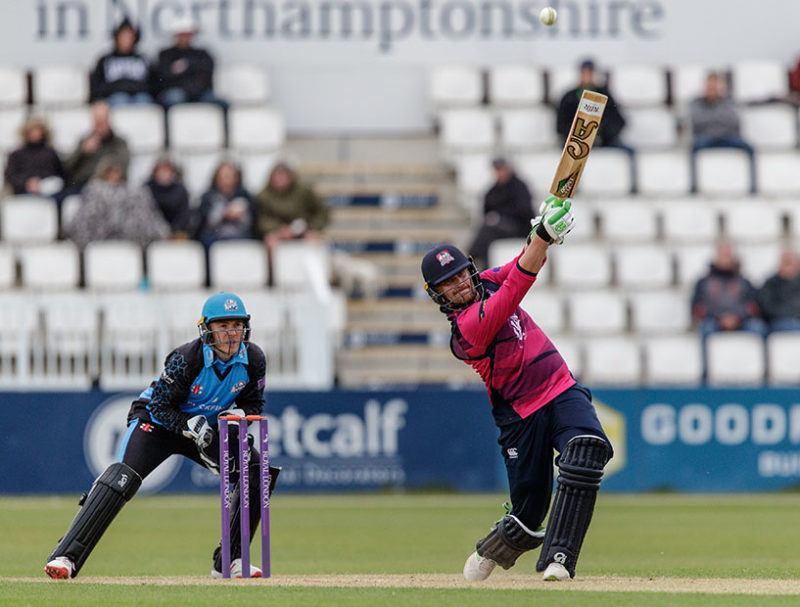
Northants Steelbacks in action during the 2018 Royal London One-Day Cup
How Can You Ensure Good Recovery?
Busy fixture schedules can make it difficult to achieve consistent recovery among your team. Nevertheless, coaches can introduce protocols and adjust training schedules to put their players in the best position to recharge and recover as games come thick and fast.
The QRT helps coaches identify when increased recovery protocol is needed whilst also opening the conversation with athletes to find out what’s going on with them. Can they be pushed harder, or are they unexpectedly struggling due to some lifestyle factors impacting recovery. If the latter, a Stress & Recovery assessment could provide insights to get them back on track:
“The QRT scores have been crucial in both our preparation and recovery strategies throughout our busy fixture schedule over the last 18 months, explains Chris. “For example, if an athlete has shown low QRT scores over several days he will go through numerous recovery protocols in order to combat the fatigue signs that he is showing and, if needed, we’ll adjust this training schedule accordingly.
“And the players have bought into the QRT scores as well. They understand that if we are seeing regular trends then we can adjust training schedules to get the best out of them as athletes.”
Read more about Firstbeat Sports
If you liked this article, you should subscribe to our mailing list.
Give your team the Firstbeat Sports competitive advantage.
Contact us for more information or get a quote.
You might also be interested in
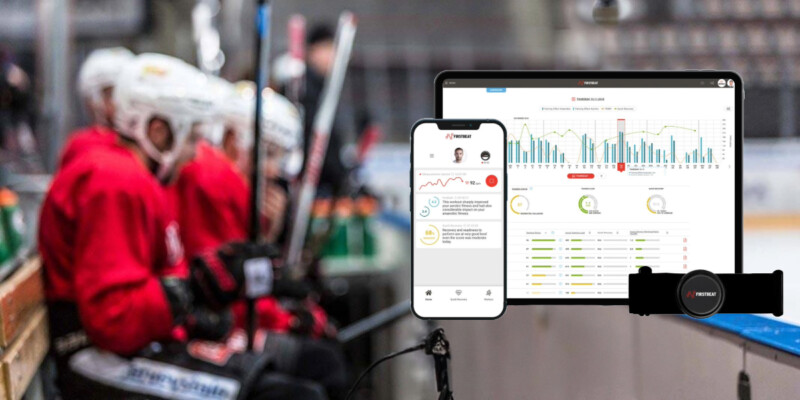
Why Nearly 50% of NHL Teams Rely on Firstbeat for Results
Since 2008, Firstbeat Technologies has played a part behind the scenes at many of the North American league’s 31 franchises.
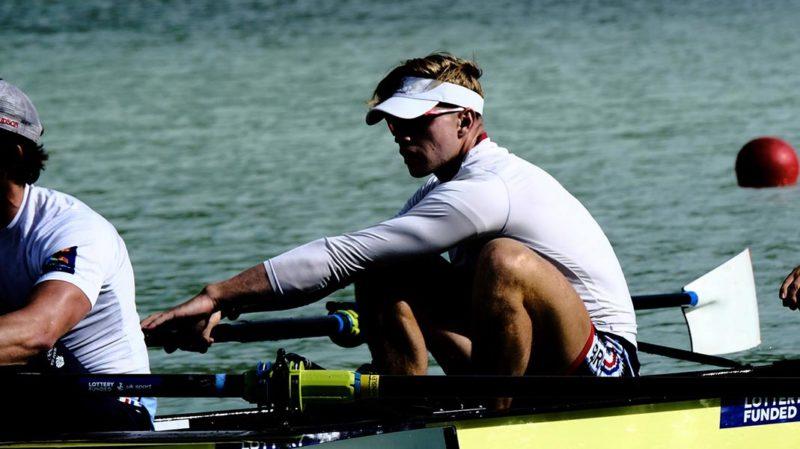
Firstbeat Athlete Profile: Tom George
See how a rower of Princeton University and Team GB rowing, Tom George, uses Firstbeat Sports to aid training, recovery and performance.
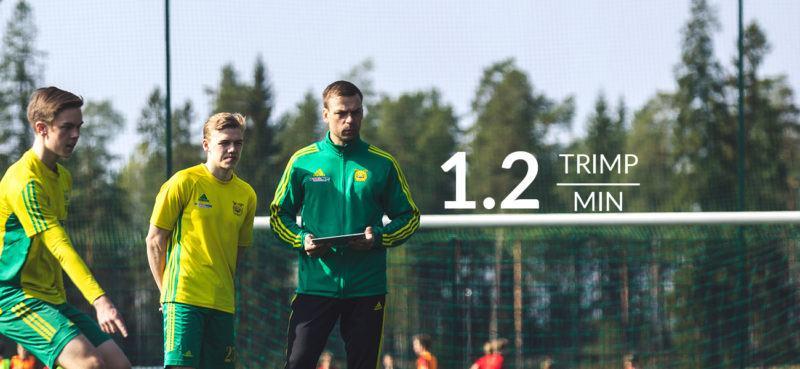
Real-time TRIMP/min: How to Use the Firstbeat Sports App Feature in Training
From replicating game intensity to aiding player rehab, monitoring TRIMP/min has wide-ranging benefits.

